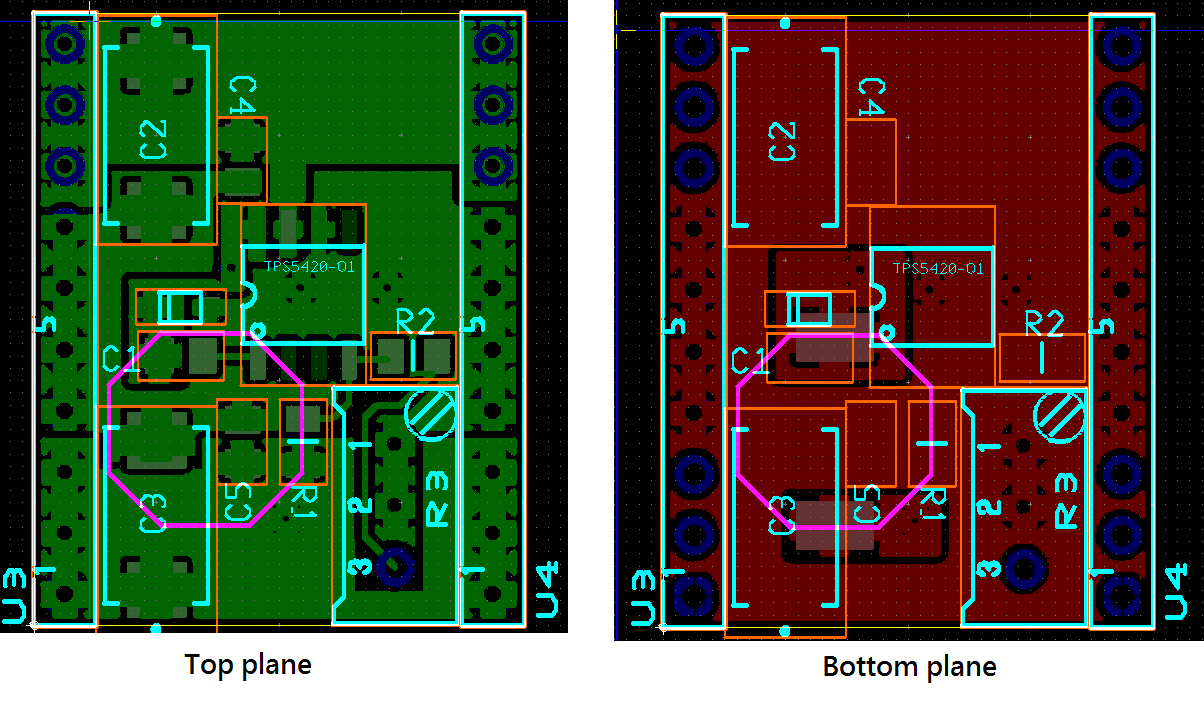Hello, I have a problem when using the TPS5420. I want to convert the 28V to 15V and 24V. Using the different ration of R1 and R2 to reach the goal. Here is the schematic of the test board. Resistor R1 is 10k ohm. Resistor R2 is constructed by 470 ohm and a potentiometer of 500 ohm(R2 and R3 in schematic snapshot). And the enable pin is floating.
I can adjust the potentiometer to get 15V and 24V output. And I use an dc electric loads(Agilent N3300A) to force the output current. I can force the output current 1A when testing 24V output.(1A is the limit of power supply)
But there is a problem when i test 15V output. When i force the output current 1A, the tps5420 will fail. The input output and ground are shorting.I have no idea about this problem.
Please let me how to solve this problem and why this happen.
Thanks a lot.


